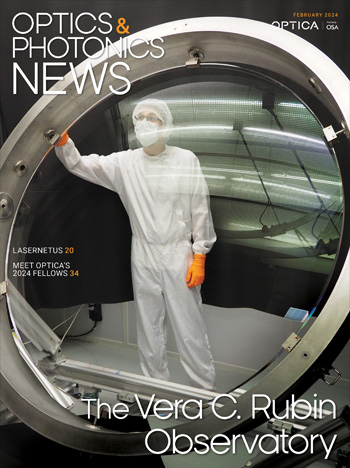
January 1992 Issue
Feature Articles
Progress On Optical Fiber Amplifiers For 1.3 ?m
How many times have you heard the phrase, "Do the best you can!"? If you are old and experienced (i.e., wary), you will probably snap back with "What does that mean?" "Oh, diffraction limited will do," your customer will reply with a condescending air, and hurry off. It is sad, but so often true, that the optical designer (or project engineer) finds himself/herself with back firmly affixed against the proverbial wall as a result of this simple, preliminary, and often only specification. The odds are that "the best" is usually too good (i.e., costs too much and/or takes too long) or is not good enough (i.e., functions poorly).
by Valerie OlsonThe Mathematical Evolution Of Wavefronts
The publication of the Traité de la Lumière in 16901 by the Dutch physicist and mathematician Christiaan Huygens— 300 years ago—may be considered the culmination of geometrical optics in the 17th century, a century that had witnessed the birth of this discipline as a new branch of the already quite venerable science of optics.
by Jean-Claude A. Chastang and Rida T. FaroukiStray Light
Stray light is a stray subject, little mentioned in books and courses, usually learned about the hard way— by bumbling into it. Stray light is everywhere, degrading the performance of optical systems. Like a chronic disease, its effects are persistent and gradually increasing, so that victims may not recognize their affliction. We typically notice stray light—as everything else—when there is a sudden change for the worst. The scratches and dust on our windshield are given little thought until the car is turned toward a low sun and we are overwhelmed with scattered light. One reason for overlooking stray light is the tendency to think about the light we want, not the light we don't want. Also, the path of the wanted light is more predictable.
by Douglas GoodmanEconomics And Standards: Sharing The Cost Of Doing Business
One could reasonably ask, "What does a recent Nobel Prize in Economics have to do with optical standards"? This month, we explore the connections between the two. As you may have read, the English born and educated economist, Ronald H. Coase, now a University of Chicago professor, was awarded the Nobel Prize in Economics in mid-October. The award was the based primarily on two short papers, "The Theory of the Firm" and "The Problem of Social Cost." While neither paper has anything to do with standards per se, the arguments in both apply directly to the business consequences of using standards.
by Robert E. ParksThe Store-Front Cat
In any city worthy of the name are many commercial areas about three blocks long—clusters of small shops that offer shoe repair, vegetables, insurance, gourmet coffee, used books, real estate, flowers, and greeting cards. They have changed little over half a century. Needlework stores may give way to rapid printing, or dry cleaners to laundromats, but the dominant characteristic of the neighborhood shopping street remains the same, a permanence unchallenged by even the glossiest shopping mall.
by Helen Vogele GourleyWdm Technology and Applications
Over the past decade, optical communications has penetrated deep into the telecommunications systems of most developed countries. Optical fiber has replaced copper to a large extent in the trunk network, bringing with it the benefits of increase regenerator spacings, lower cost, and improved reliability through the reduction in the amount of electronics. The use of optical communication technology has enabled much greater transmission speeds, with the result that 2.5 Gbit/s will become a standard transmission rate within the next few years.
by M. J. O'Mahony
![A multiplexed image of a human tonsil acquired. [NIAID] using the iterative bleaching extends multiplexity (IBEX) method.](https://opnmedia.blob.core.windows.net/$web/opn/media/images/articles/2024/0424/departments/202404-cover-web.jpg?ext=.jpg)

